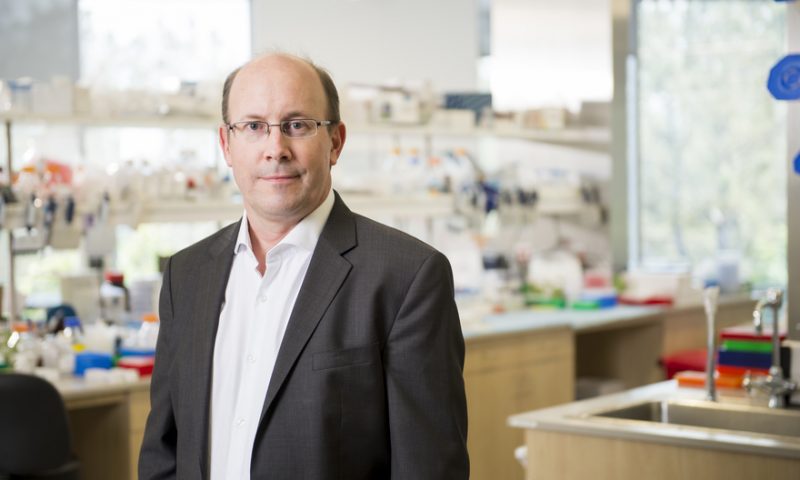Adults with acute myeloid leukemia (AML) often beat back their cancer with frontline chemotherapy, but many patients relapse and need other options. Early data out of Kura Oncology suggest that menin inhibitors could be one of those options.
In a study of patients with various cancer-driving mutations, Kura’s candidate, KO-539, eliminated the tumors of two patients with AML that had come back after previous treatment or hadn’t responded in the first place. One patient had a mutation in the NPM1 gene, which is linked to menin, while the other had mutations in the SETD2 and RUNX1 genes, both of which are thought to be unrelated to menin.
The first patient had tried seven other treatments without success and is still on treatment after three 28-day cycles of KO-539.
Kura is developing its menin inhibitor for patients with specific cancer-driving mutations linked to menin: MLL rearrangements—also called KMT2A rearrangements—and NPM1 mutations. At the FDA and investigators’ behest, it’s testing the drug in patients with other mutations too. The AML data come from a small phase 1/2a study testing four dose levels of the drug in 12 patients. Combined, the trial participants had a veritable alphabet soup of cancer-driving mutations and had tried a median of three prior treatments. Of the eight evaluable for efficacy, six showed signs of drug activity.
Outside of the patient who achieved remission, the drug also showed promise in a second patient with a mutant NPM1 gene, who achieved a morphological leukemia-free state (MLFS), meaning the patient no longer had leukemia but that the disease wasn’t resolved yet.
“Those two patients—one in complete remission who was minimal residual disease-negative and the other in MLFS—I think will reinforce to people the promise of these menin inhibitors that they can actually treat the NPM1 mutant population,” Kura CEO Troy Wilson, Ph.D., said. “The SETD2/RUNX1 patient is just the cherry on top of the sundae, the one none of us were expecting. This could potentially open up a broader patient segment for menin inhibition.”
Menin inhibitors work differently than other targeted therapies, such as those designed for ALK, TRK and RET gene fusions. The latter work by hitting the kinase enzymes the mutations code for, but MLL rearrangements have no enzymes to target. Instead, drugs like KO-539 stop MLL from being where it needs to be on the DNA, thereby preventing the expression of two transcription factors that can transform blood stem cells in the bone marrow into leukemia cells.
Those stem cells must decide between being “angry adolescents or grown-up adults,” Wilson said.
“For AML to be malignant, the cells need to remain immature, in that state of perpetual adolescence, and they need a strong proliferation signal,” he explained. “If you look downstream, the two transcription factors, HOXA9 and MEIS1, can transform stem cells into leukemia.”
Targeting the interaction between MLL and menin in patients with MLL rearrangements or NPM1 mutations helps their stem cells change from “angry adolescents” into mature blood cells that live a normal lifespan and die, Wilson said.
The phase 1 data are early and come from a very sick group of patients. They don’t constitute proof of concept, but they lay the groundwork for a phase 2 study that could. The company plans to test KO-593 in expansion cohorts of patients with NPM1-mutant AML and patients with MLL-rearranged AML as soon as it finds a recommended phase 2 dose.
Beyond these two buckets of patients, Kura has several other patient groups to explore. It wants to move into frontline treatment in combination with the standard of care—which includes chemotherapy or combination treatment with AbbVie and Genentech’s Venclexta and drugs that block DNA methylation—and then into pediatric leukemia.
“MLL rearrangements are among the most prevalent genetic defects in infants and children—they are born with full-blown leukemia,” Wilson said. “It requires a different formulation and we need to be careful about dosing, but we see a clear path there.”
After that, Kura hopes to treat other leukemias, such as acute lymphoblastic leukemia and mixed-phenotype acute leukemia, as well as prevent the development of precancerous blood disorders into aggressive leukemia.
“We know, for example, that myelodysplastic syndromes that have NPM1 mutations have a very high risk of turning into full-blown AML,” Wilson said. “It would be nice if we could intercept these patients and treat them before they become desperately ill.”

